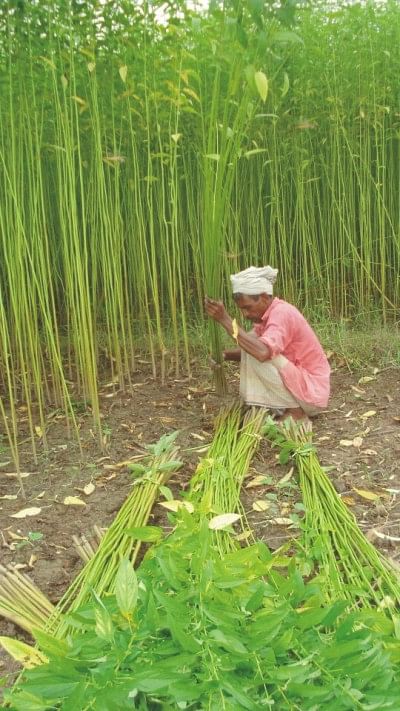Jute hope brightens in Khulna

Business people will find it simpler to import goods to Laos if a new prime ministerial decree on import procedures is enforced.
The new legal document, which Prime Minister Bouasone Bouphavanh signed in July, also aims to move Lao import procedures closer to the rules and regulations of the World Trade Organisation.
The reforms form part of the main conditions for the country to become a member of the global trade group.
The ministry of industry and commerce is now drafting a list of the goods which business people will be required to seek permission from authorities to import.
This is seen as part of efforts to improve clarity for those importing goods and raw materials to production bases in Laos .
Jute cultivation expanded to 10 districts in the southwestern region this year compared to previous years.
Farmers who showed reluctance to cultivate the product due to low price have now started growing the crop in large-scale as it has been fetching good profit for the last several years.
According to officials at different Agricultural Extension Departments (AED) in Khulna division, the farmers cultivated jute at 115,938 hectares of land against the AED target of 124,900 hectares in 10 districts in the region this year.
The average yield of the crop and market atmosphere were also better in the region in the last few years that helped the farmers get benefitted, the AED officials, farmers and market analysts said.
Kushtia district was on top in cultivating 24,352 hectares of land this year, while Jessore cultivated 13,733 hectares, Jhenidah 11,193 hectares, Magura 20,280 hectares, Narail 9,000 hectares, Chuadanga 15,950 hectares, Meherpur 16,180 hectares, Satkhira 4,200 hectares, Bagerhat 200 hectares and Khulna district 850 hectares.
The cultivation was in 90,000 hectares last year and 84,280 hectares in 2007.
Several varieties of jute are being cultivated in the region. Of those, farmers mostly cultivate Deshi (Chorchorous) and Tossa (Chorchorous Olitorius) due to low price of their seeds and good yield. Tossa, which is the most popular, was cultivated in at least 85,236 hectares of land, while others, including Deshi, in the rest of the land.
The crop has started coming to different markets in the region and the farmers are also getting good price.
According to the farmers, the production cost for per bigha land was about Tk 7,000. Ten to twelve maunds were produced in a one-bigha land, and the product was selling at around Tk 1,200 to Tk 1,400 per maund.
“I made profit by cultivating jute as the price is still better,” said Abdul Baki, a farmer of Sailkupa in Jhenidah district. He cultivated jute in two bighas of land.
Farmers said they will be benefited if the present price continues.
There were some problems the farmers faced in jute cultivation this season. Scarcity of seeds was one of those.
They said sowing was hampered due to seed crisis during the sowing season. A large number of farmers failed to sow seeds in due time.
According to officials at Bangladesh Agricultural Development Corporation (BADC) and AED, 704,280 kilogrammes of seeds of both Tossa and Deshi varieties were needed for Khulna division. But the government supplied only 42,478 kilogrammes this season.
This forced the farmers to collect seeds from market and they had to pay higher prices.
A high official of BADC in the region said the government failed to procure seeds from the farmers last year. This resulted in scarcity and high price.
A number of farmers were also cheated by buying low quality Indian seeds, the farmers said.

 For all latest news, follow The Daily Star's Google News channel.
For all latest news, follow The Daily Star's Google News channel. 



Comments